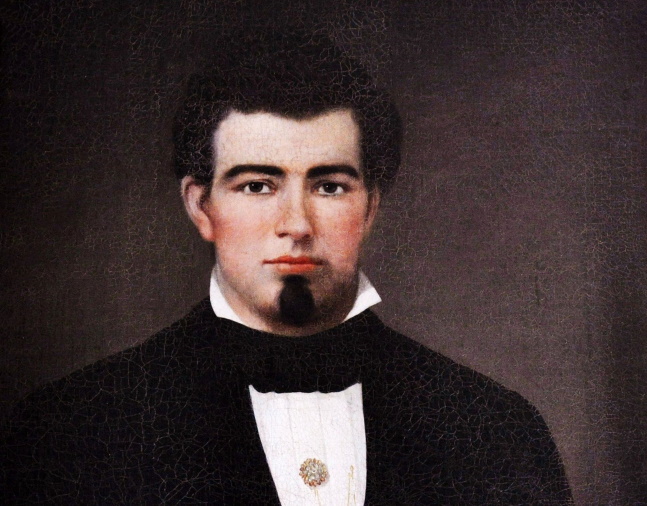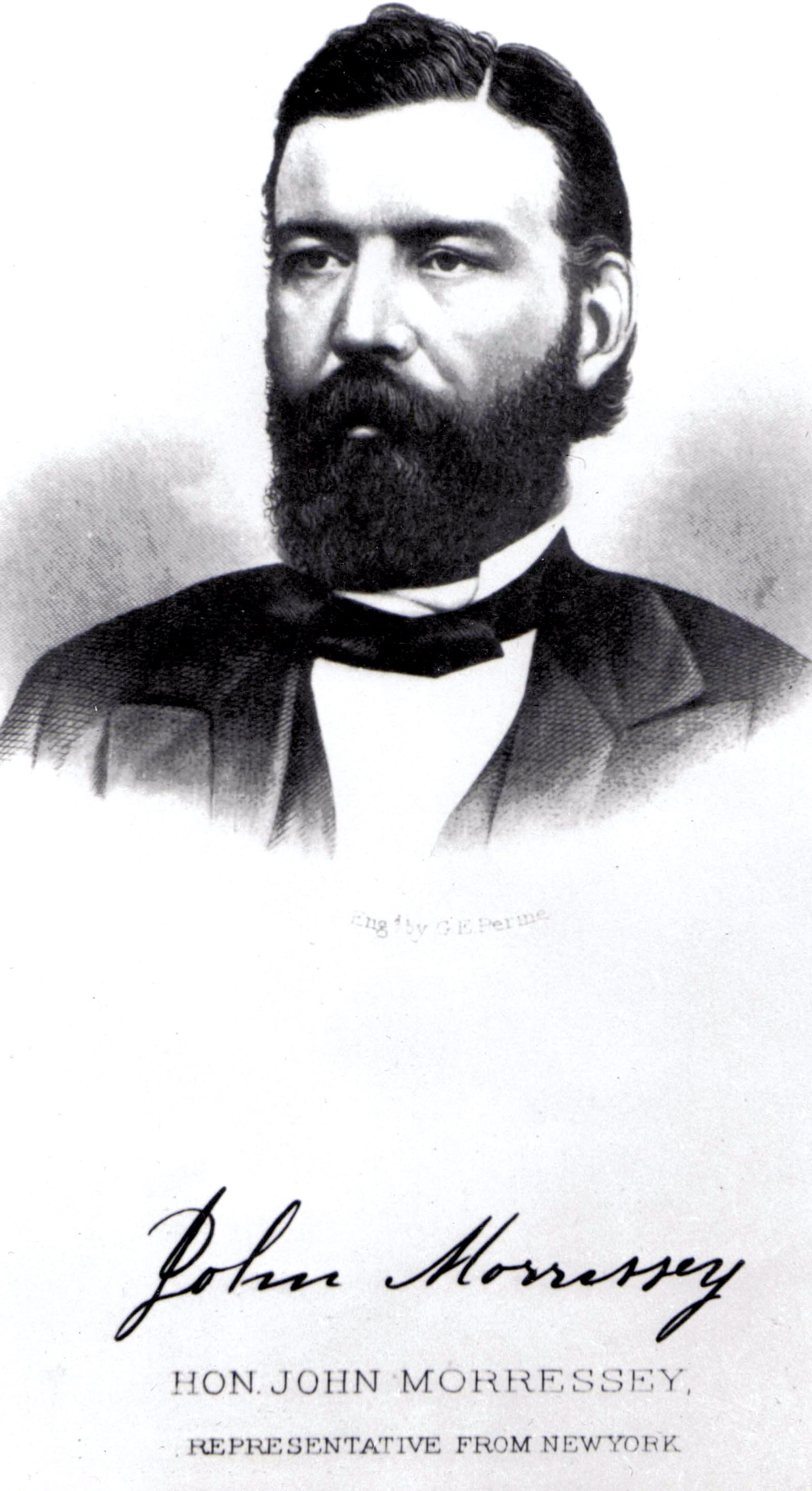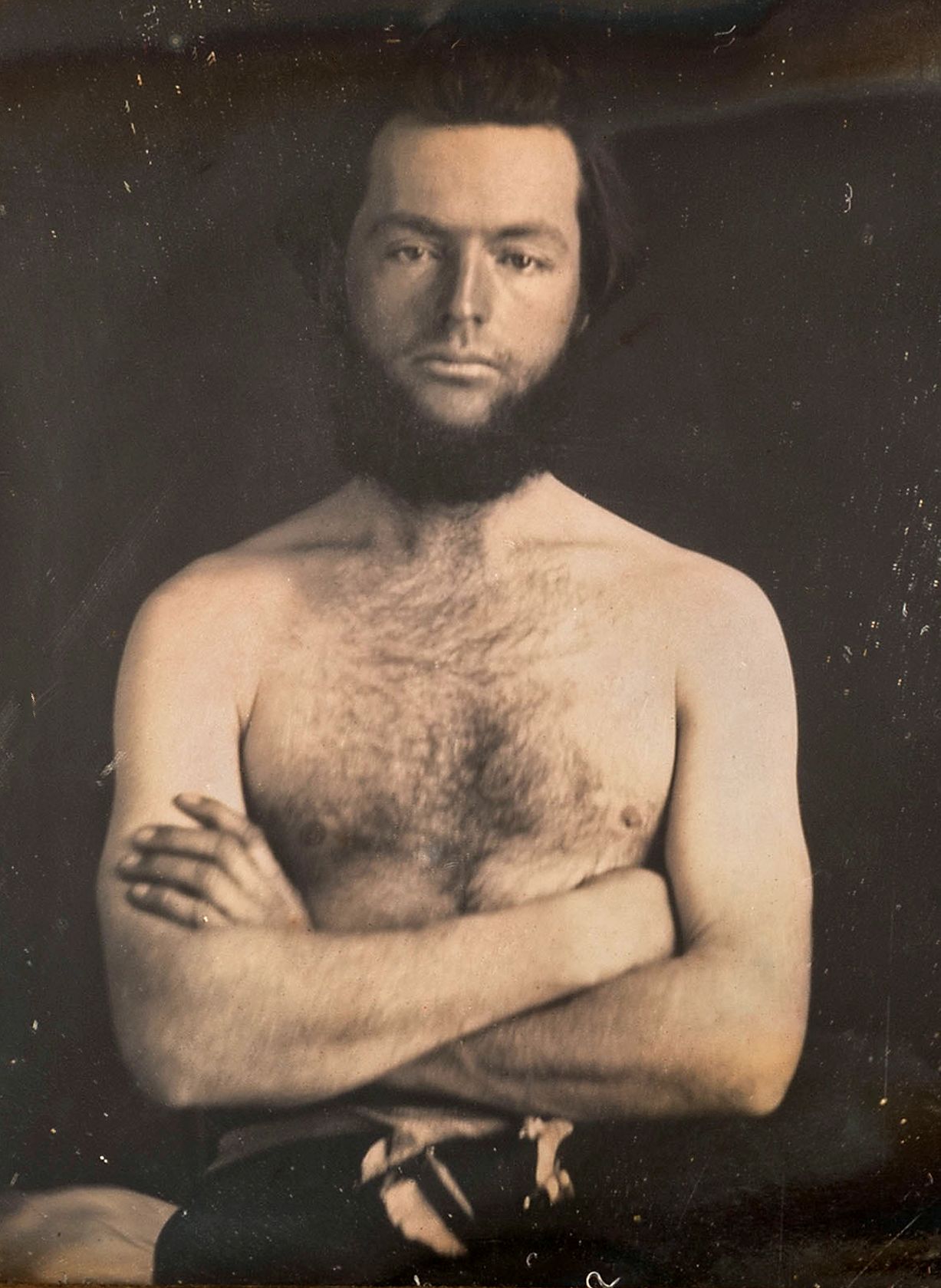John Morrissey
Of all the longshots to achieve improbable glory in the storied history of American thoroughbred racing, there is arguably no more astonishing rags-to-riches odyssey than that of John Morrissey, the driving force behind the inaugural Saratoga meeting in 1863 and the founder of Saratoga Race Course.

2018
Feb. 5, 1831, Templemore, Ireland
May 1, 1878, Saratoga Springs, New York
Biography
Of all the longshots to achieve improbable glory in the storied history of American thoroughbred racing, there is arguably no more astonishing rags-to-riches odyssey than that of John Morrissey, the driving force behind the inaugural Saratoga meeting in 1863 and the founder of Saratoga Race Course.
In a turbulent and triumphant life, Morrissey went from illiterate street brawler to undefeated American bare-knuckle boxing champion. Along with being a skull-crushing pugilist, the uneducated Morrissey was determined to make something of himself in society. He taught himself to read and write in his late teens and used shrewd business acumen to achieve success as owner and operator of numerous gambling houses in New York City. Morrissey then defied the odds even more by becoming one of the most improbable politicians in American history, serving in both the United States Congress and the New York State Senate.
Morrissey was born on Feb. 5, 1831, in Templemore, County Tipperary, Ireland. His family arrived in America three years later in hopes of escaping the poverty and famine that ravaged Ireland. They settled in Troy, New York, but life wasn’t much different than in Templemore. Morrissey’s father, Tim, worked odd jobs along the docks of the Hudson River for meager wages and the family struggled. Meanwhile, young John Morrissey was busy developing a reputation with the local authorities as a menace to society.
By the time he was 18, Morrissey was an intimidating figure with a propensity for violence. Arriving in New York City, Morrissey quickly earned the nickname “Old Smoke” during a fight at an indoor pistol gallery with a feared brawler named Tom McCann. Morrissey was pinned on his back atop burning coals from a stove that had been overturned during the melee. As the burning coals were grinded into his back, Morrissey somehow fought off his opponent and made his way upright.
As flames, smoke, and the repugnant smell of scorched flesh filled the air, an enraged Morrissey proceeded to thrash McCann until his face was almost unrecognizable, almost killing him in the process. Word of his exploits quickly made the rounds and Morrissey became one of the most feared men in New York.
Although he earned his nickname in a rough-and-tumble encounter, Morrissey did his most notable fighting in the ring. He won the American boxing championship by defeating Yankee Sullivan in 1853 and retired undefeated with a successful title defense against John Heenan in 1858. Morrissey’s 11th-round knockout of Heenan was so devastating the challenger remained crumpled up in the dirt motionless for several minutes.
Five years later, Morrissey set up a four-day experimental thoroughbred meeting at the Saratoga Trotting Course. The track was the site of Lady Suffolk’s famous victory over Moscow in Saratoga’s first official race, a harness event, in 1847. Just one month before Morrissey’s inaugural Saratoga meeting, Union soldiers won two of the bloodiest battles of the Civil War at Gettysburg and Vicksburg, respectively. To secure victory, the Union requisitioned every healthy horse it could find. Morrissey, meanwhile, somehow managed to convince several wealthy sportsmen to support racing at Saratoga. While war raged elsewhere, Morrissey, only 32 years old at the time, somehow found 27 quality thoroughbreds to run at the old trotting grounds.
On what was described as a “shimmering summer day” by the Spirit of the Times, thousands of spectators witnessed a 3-year-old filly named Lizzie W. with a one-eyed jockey in the irons defeat a colt named Captain Moore in a series of one-mile heats in the first official thoroughbred race at Saratoga on Aug. 3, 1863.
Because of Morrissey’s ambition and resolve, thoroughbred racing had arrived at Saratoga. There were only eight races in the four-day meeting that summer, but the seed was planted and John Morrissey had delivered another winner. The Spirit of the Times described the in augural meeting at Saratoga as a great success, establishing “the foundation for a great fashionable race meeting at the Springs, like that at Ascot in England.”
The first organized races at Saratoga were so successful that Morrissey enlisted three partners — sportsmen William Travers, Leonard Jerome, and William Hunter — and put up the money for the construction of a grand racecourse across the street from the original track. Morrissey purchased 125 acres of land, and in 1864 Saratoga Race Course opened its gates for the first time. Morrissey described his new track as “the most classic racecourse in this country, located among the pines, beautiful to the eye, and rejuvenating to the horse.”
Although he kept his name out of the track’s incorporation documents, Morrissey was anything but a silent partner. As Saratoga’s impresario, Morrissey led the track’s day-to-day operations and held a controlling ownership interest, which he maintained until his death. The former boxing champion brought order, prestige, and elite competition to Saratoga both during and after the Civil War. His leadership delivered the first truly organized sports schedule in the country and played the most essential role in furthering the appeal of Saratoga Springs as a summer destination.
Morrissey served two terms in Congress and played a key role in sending Tammany Hall’s corrupt leader, William “Boss” Tweed, to prison. Although he was not known as a great orator, Morrissey was a charismatic and respected politician. On the rare occasion he didn’t get what he desired, Morrissey was known to revert to his strong-arm tactics to sway the opinions of those who opposed him. After two terms in Congress, he was elected to the New York State Senate in 1875 and re-elected in 1877.
Morrissey, however, became ill at the beginning of his second term in the state Senate and died of pneumonia on May 1, 1878, at the Adelphi Hotel. He was 47. The entire state Senate attended funeral services in Troy and Morrissey was laid to rest at St. Peter’s Cemetery. In a cold rain, more than 20,000 mourners lined the streets of Troy to pay their final respects to a man who had occupied center stage in life, in numerous roles, for more than two decades.
Morrissey left behind a most interesting legacy. He was elected to the International Boxing Hall of Fame in 1996 and the John Morrissey Stakes for New York-breds is run in his honor each summer at the historic track he conceptualized and brought to prominence.
Although his origins were humble, what Morrissey accomplished in boxing, business, gambling, politics, and thoroughbred racing secured him a legacy as one of the most unique American figures of the 19th century. A success in each of those diverse arenas, John Morrissey proved that the possibility of the American dream did in fact exist. All he needed to realize his ambitions was a fighting chance, or a chance to fight.
Achievements
Inducted into the International Boxing Hall of Fame — 1996
Media
![John Morrissey (Library of Congress, Currier and Ives Collection, LC-DIG-pga-04907) John Morrissey, born February 5th 1831. height 6 feet. weight 170 lbs. (Library of Congress, Prints & Photographs Division, [LC-DIG-pga-04907])](https://racingmuseum.org./sites/default/files/hall-of-fame/pillars/Morrissey%20Library%20of%20Ciongress.jpg)

![John Morrissey (Library of Congress, Prints and Photographs Division, LC-DIG-cwpbh-04834) Hon. John Morrissey of New York (Library of Congress, Prints & Photographs Division [LC-DIG-cwpbh-04834])](https://racingmuseum.org./sites/default/files/hall-of-fame/pillars/morrissey%20loc.jpg)





